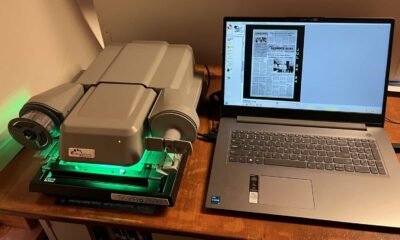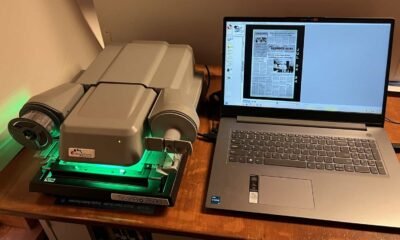Entertainment
Sedona Residents Unveil Fascinating Tales of Historic Properties

The Sedona Heritage Museum recently celebrated Historic Preservation Month with an event on May 3, emphasizing the significance of Sedona’s historic landmarks. This gathering provided homeowners a platform to share stories about their properties, enriching the community’s understanding of local history.
Nate Meyers, Chairman of the Historic Preservation Commission and Executive Director of the Sedona Historical Society, outlined the commission’s role in designating city landmarks. “We look for buildings that are at least 50 years old,” he stated, noting the importance of compelling narratives behind these sites. Currently, Sedona boasts 23 designated historic landmarks.
Three prominent properties were highlighted during the event. The Van Ess House, constructed in 1964, stands at 280 Zane Grey Drive, while the Gateway Cottage Wellness Center, formerly the George Jordan Sales Building, was built in 1939 and is located at 470 N. State Route 89A. The Hart Store, established in 1926, can be found at 100 Brewer Road.
The George & Helen Jordan Sales Building, now home to the Gateway Cottage Wellness Center, showcases red sandstone construction from Sedona’s pioneer era. Owned by Gregg and Alu Ponder since 2014, the building underwent significant renovations, including the addition of therapy rooms and a retail area featuring local crafts. “We wanted to preserve its history,” Gregg Ponder remarked about their restoration efforts.
Similarly, the Foleys, who have lived in the Van Ess House since 2020, appreciate its midcentury modern architecture, designed by Arizona architect Donald Theodore Van Ess. This landmark was celebrated for its integration with nature and artistic appeal. Estocin Foley expressed her admiration, noting that living there feels like “being in a work of art.”
Meanwhile, the Hart Store, once Sedona’s first general store, holds a rich history as a community hub. Owned by P.J. Malani, it was designated a historical landmark in 2002 and later added to the National Register of Historic Places. Malani reflected on its legacy, stating, “This was the first place in Sedona to get a phone line and power,” emphasizing the store’s integral role in the area’s history.
The event not only recognized these historic sites but also fostered community engagement, allowing the stories of Sedona’s past to resonate in the present.
















